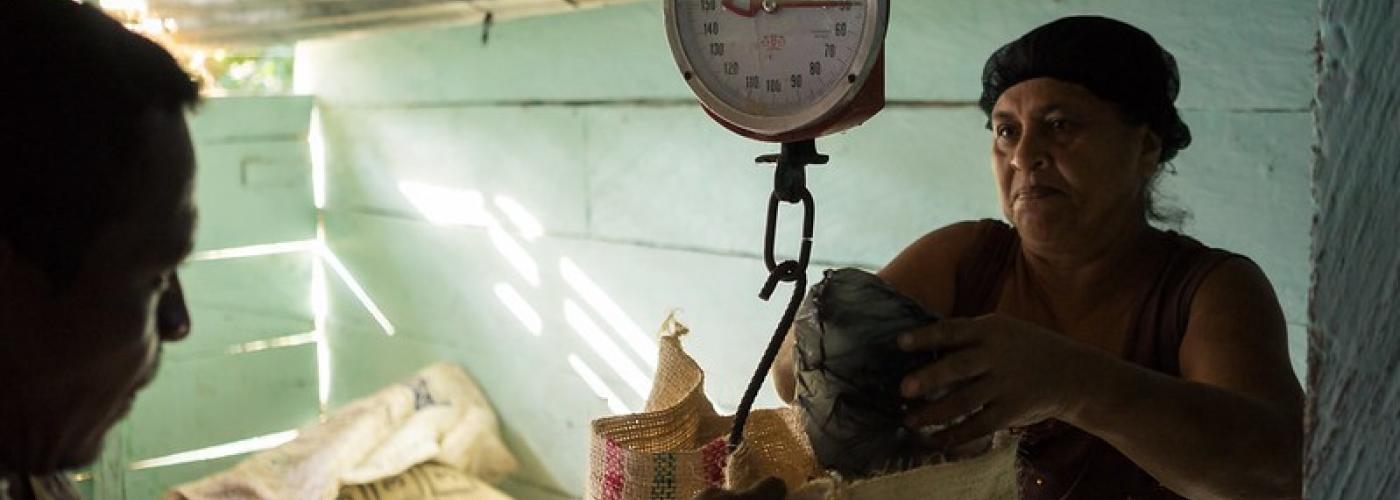Mobilizing Agriculture Finance Solutions at Scale
Image

On November 12, Marketlinks hosted a webinar “Principled Interest: Mobilizing Agriculture Finance Solutions at Scale,” featuring Brian Milder, founder and CEO of Aceli Africa (Aceli) and Amanda Fernandez, Director of Economic Growth at Palladium. Brian and Amanda discussed Aceli Africa and the Kenya Investment Mechanism (KIM), two innovative finance interventions that are mobilizing private capital in agricultural finance through an approach that combines market incentives and technical assistance.
The webinar covered:
- The innovative finance interventions of Aceli and KIM and highlighted how to apply similar principles and tactics in international development programs.
- The range of challenges facing private sector investors when working with donors and implementing partners.
- How to measure impact beyond capital mobilized, especially in the context of scarce donor dollars and resources.
USAID’s approach to finance in the agriculture sector
Small and medium-sized enterprises (SMEs) contribute more than 60 percent of agricultural production and trade in Africa, but face up to a $65 billion investment shortfall each year. In addition, around 65 percent of East Africa’s population depends on agriculture as their primary source of livelihood, yet the sector receives only about five percent of commercial bank lending. Closing the financing gap for agri-SMEs is key to advancing economic growth. Given the wide financing gap, USAID must partner with the private sector in order to create sustainable and scalable programs.
Aceli and KIM are two of the most innovative programs in agricultural finance that are working to bridge the gap. These programs are using incentives and technical assistance to enable SMEs to become investment-ready for commercial bank lending. They differ largely around how their activities were designed and the market segments reached.
See summary table below of some of the differences discussed during the webinar.
|
Area |
KIM |
Aceli |
|
Stage of evolution |
Launched in 2018, KIM’s design relied heavily on Palladium’s experience in managing the Financing Ghanaian Agriculture Program (USAID FinGAP), a five program in Ghana. |
Launched in 2020 |
|
Initial approach |
Long-time USAID implementing partner |
First-time USAID partner from a social lending space. |
|
Structure |
Fixed life 5-year contract originally designed for Kenya, which has since expanded to Burundi, Ethiopia, Rwanda, South Sudan, Tanzania, and Uganda |
Indefinite life project targeting four initial countries of Kenya, Rwanda, Tanzania, and Uganda. |
|
Funding |
Contract ceiling of $23 million. Funding all from USAID. |
Fundraising on a rolling basis; $31million has been committed to-date. Anchor donors are IKEA Foundation, the Swiss Development Corporation, and USAID ($10 million each). |
|
USAID management |
Managed by USAID/Kenya |
Managed by USAID Bureau for Resilience and Food Security (RFS) in Washington, D.C. |
|
Procurement |
Concept created internally, contract bid out and implementer selected, i.e. motivated by offer of USAID support. |
Grant proposal reviewed and approved, i.e. USAID was the first anchor donor and a catalyst for other funders to enter. |
|
Sectors` |
Agricultural, clean energy, sanitation and water access. |
Agriculture only |
|
Loans sizes |
No limit, e.g. current loans include microfinance to one transaction over $20 million |
Qualifying loan range $25,000 to $1.5 million |
Evaluating blended finance approaches
Blended finance is the use of public or philanthropic funding (referred to as catalytic capital) to increase private sector investment in sustainable development. How would we evaluate these programs differently compared to an approach that was more commercially oriented(i.e. did not require donor funding)?
The Aceli Africa and KIM programs are both good case studies for thinking about how to most effectively use scarce donor dollars when mobilizing private capital. We can reflect on the microfinance sector’s experience, which marketed itself on the premise of alleviating poverty by just providing small loans. Evaluations and extensive studies have since shown us that the microfinance impact story is much more nuanced.
While capital mobilized is the most common metric for finance transactions, asits imperative that development partners examine the additionality and development impact of private capital and how to build a stronger evidence base to help measure that impact. This could include rigorous third party evaluations of programs. It would also be important to apply the same approach to different programs so we can measure both their absolute and relative impact. Finally, learnings from publicly funded programs should be a public good so there is a need to be transparent with data and their results.
Access the recording and presentation slides.
Access the summary of the Q&A, including questions we weren’t able to get to during the webinar.

